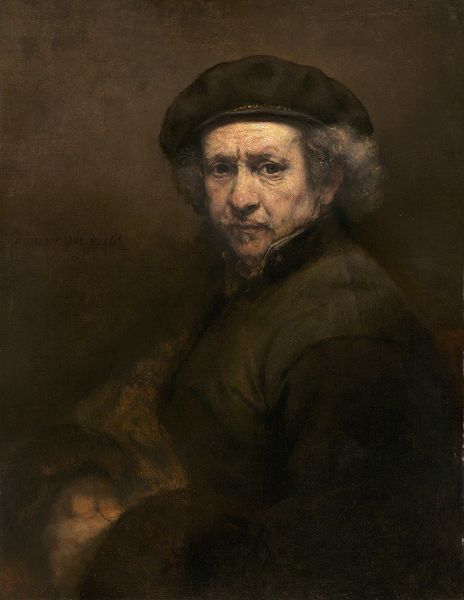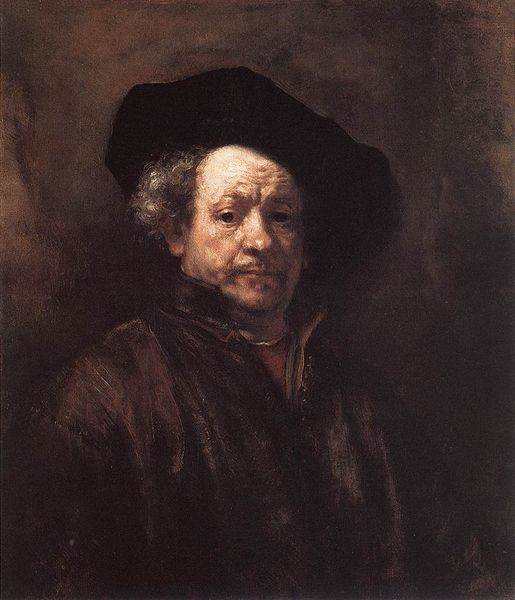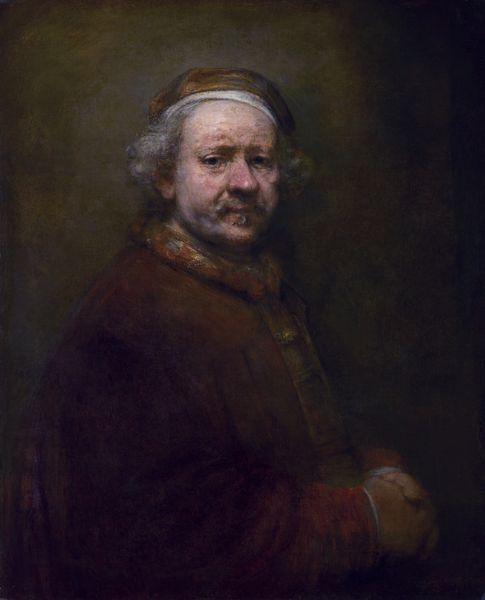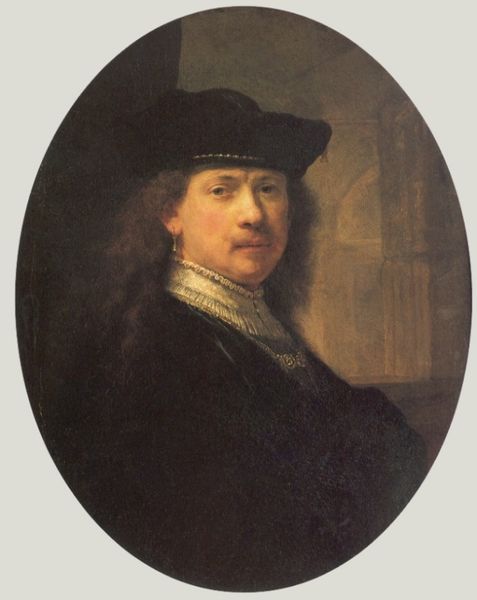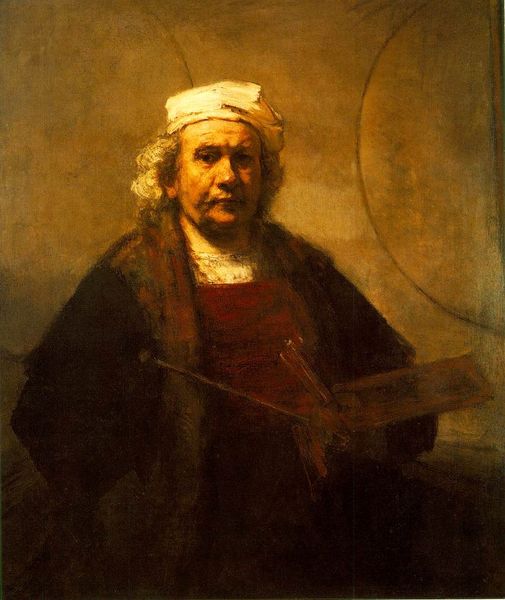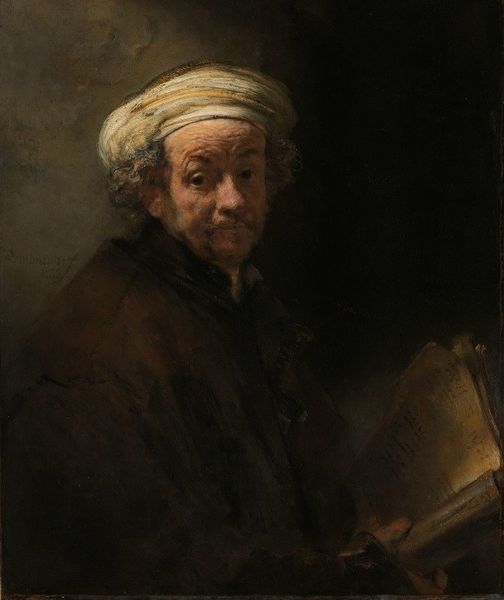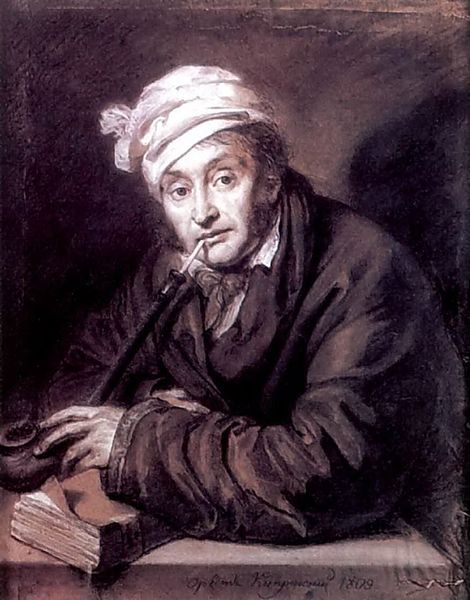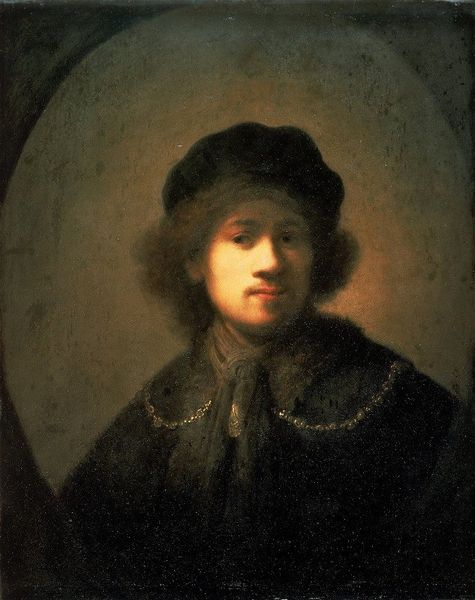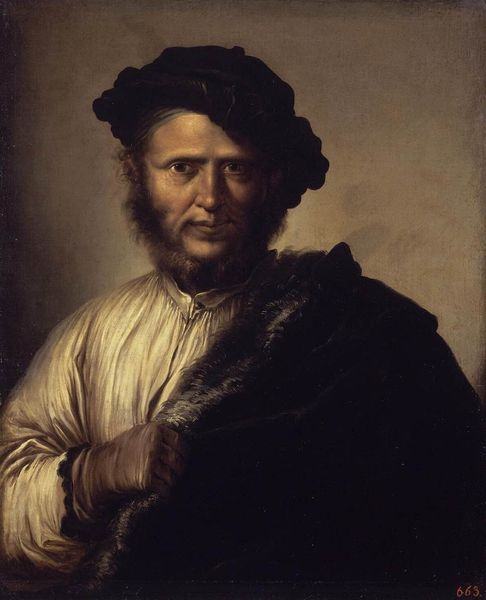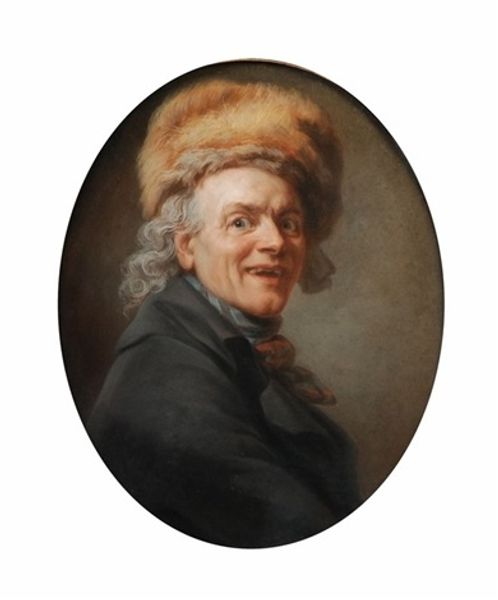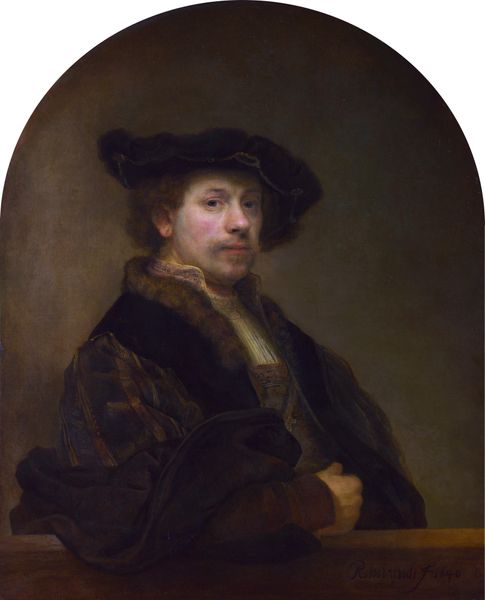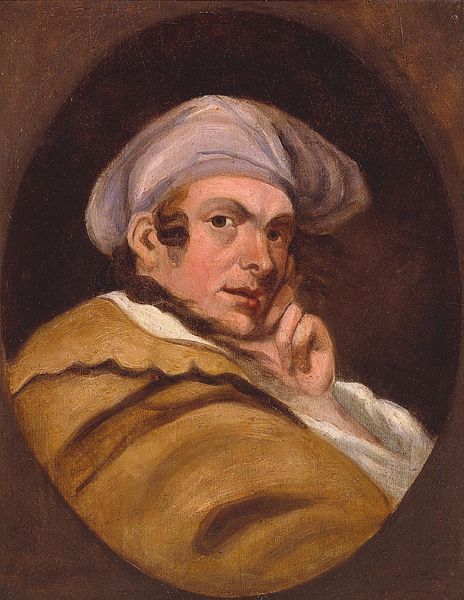
painting, oil-paint
#
portrait
#
self-portrait
#
baroque
#
dutch-golden-age
#
portrait
#
painting
#
oil-paint
#
male portrait
Dimensions: 57.8 x 63.5 cm
Copyright: Public domain
Curator: Standing here, we’re facing Rembrandt van Rijn's “Self-Portrait” from 1669. It's currently held at the Mauritshuis in The Hague. Editor: My first impression is one of weariness, but also resilience. The heavy lids, the slight downturn of his mouth—it's a portrait of lived experience. Curator: Absolutely. When we consider Rembrandt’s position as a prominent artist in the Dutch Golden Age and the profound societal shifts he witnessed, his self-portraits transcend mere likeness. The rise of secularism, burgeoning capitalism, the effects of colonialism. How did he navigate these changes? What symbols did he use? Editor: That hat! It draws my eye instantly. It feels almost theatrical, but simultaneously hides something. Hats signify status, identity, occupation. Was he signaling his artistic persona, or something more hidden beneath the surface? The light emphasizes his face and seems to create a kind of halo effect around it. Is that intentional? What symbolism did light carry during his time? Curator: I'd argue yes. That chiaroscuro, the play of light and shadow, is signature Rembrandt. But I think in a late self-portrait like this, we’re looking at a dialogue about aging, mortality. Not only the symbolic language that comes with age in a given society but also considering contemporary medical understanding of that time. It's also, a study of the psychological impacts of the passage of time on someone facing various personal and financial upheavals, in a rapidly shifting society. Editor: And he paints himself with such unflinching honesty. It's not a romanticized image. Each wrinkle, each blemish seems meticulously rendered. The brushstrokes are so raw, particularly in his face. Do you see echoes of religious imagery in these depictions of age? The suffering servant, perhaps? Curator: Possibly. I find it incredibly difficult to divorce that cultural memory and legacy from this. Regardless of how "secularized" Dutch society became. The Christian story as archetype has had lasting resonance, particularly considering social power structures across gender, class, race and politics. Editor: This gaze. It follows you around the room. There is defiance and fatigue present in those dark pupils. It makes you question who this painting is really for? What did Rembrandt want future viewers to understand from this image? Curator: It’s complex, right? Because it’s so personal, yet so exposed. Rembrandt invites us into an intimate space, and yet there's a level of scrutiny we are forced to return to him. A fascinating intersection of social pressures and individual reckoning. Editor: Ultimately, I see it as a powerful testament to human vulnerability. Curator: And an unyielding artistic legacy that interrogates structures of power in new ways, even today.
Comments
No comments
Be the first to comment and join the conversation on the ultimate creative platform.
